WEEK 8
PLANNING AHEAD
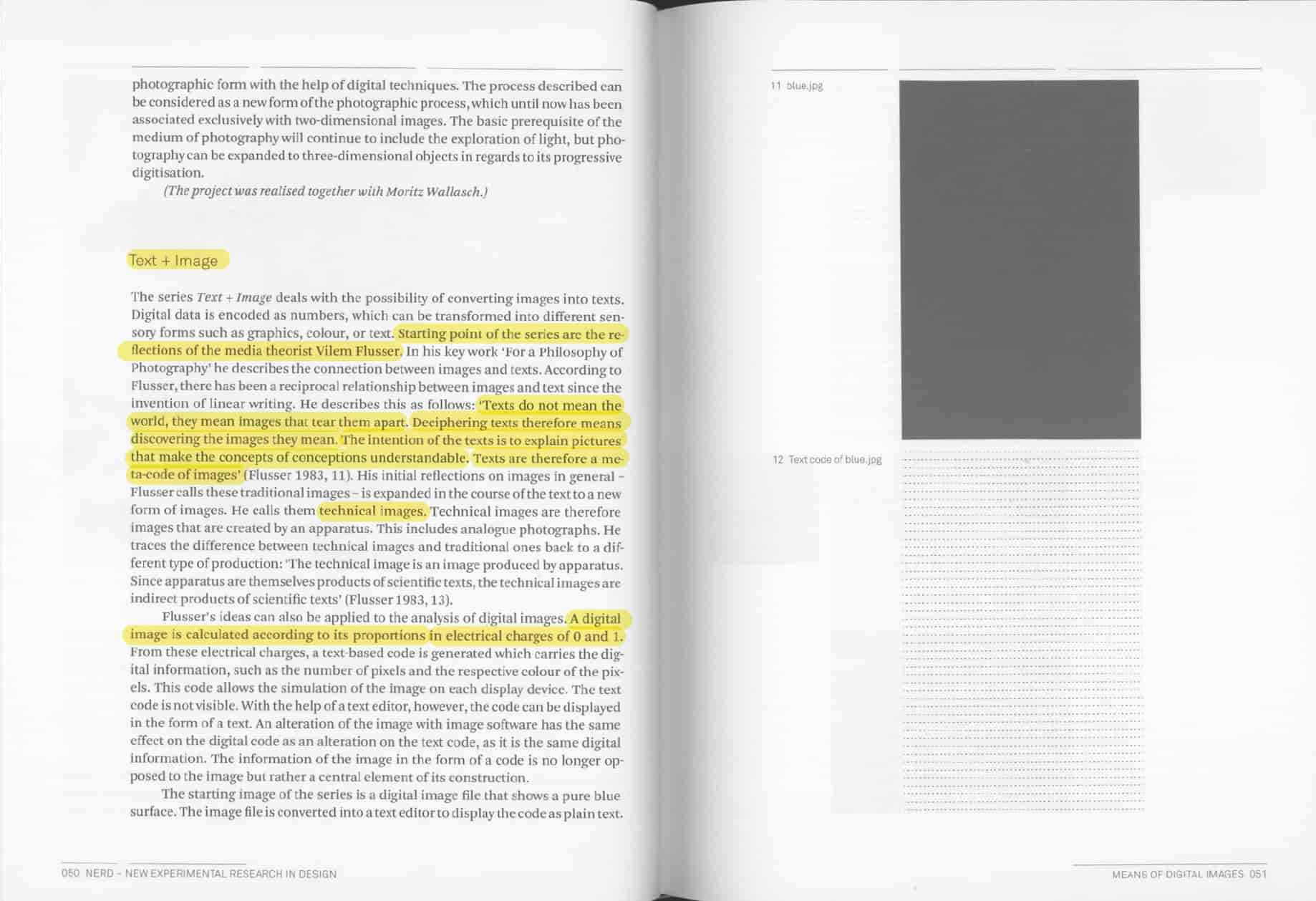
Means of Digital Images by Max Pietro Hoffman
Means of Digital Images
As I worked and refined my research proposal outline, it gave me time to reflect on what kind of approach I am interested in, and what is suitable for my project. I have said this multiple times, but I think I am the type of learner who can progress by making first. My brain somehow gets inspired better when I start doing things even if they are small tasks that I would say are initially quite doubtful.
I came upon Hoffmann’s research “Means of Digital Images” part of the NERD series (New Experimental Research in Design), and that’s where I found myself reflecting on his exploratory approach to investigating the processes and structures of digital photography.
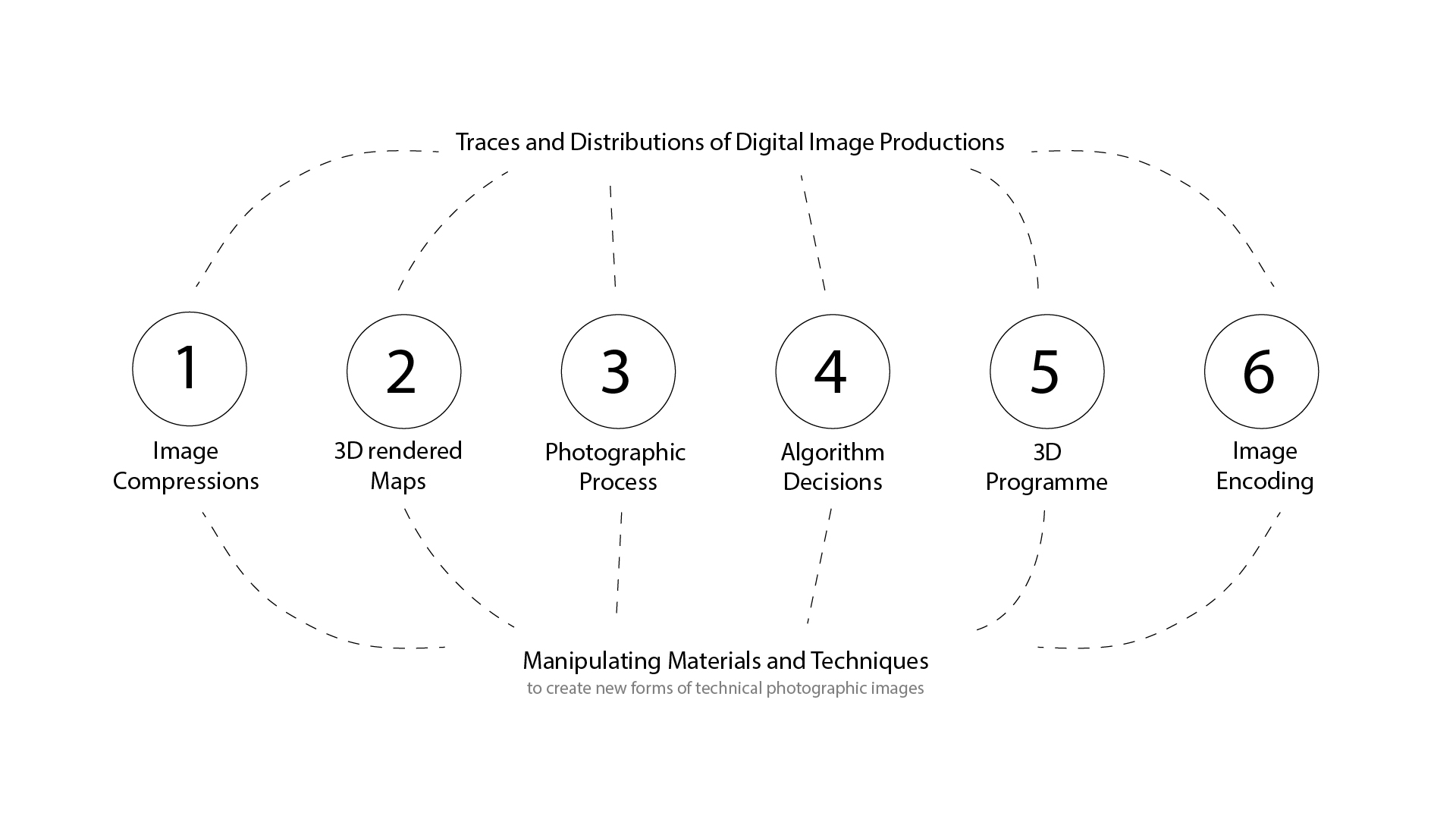
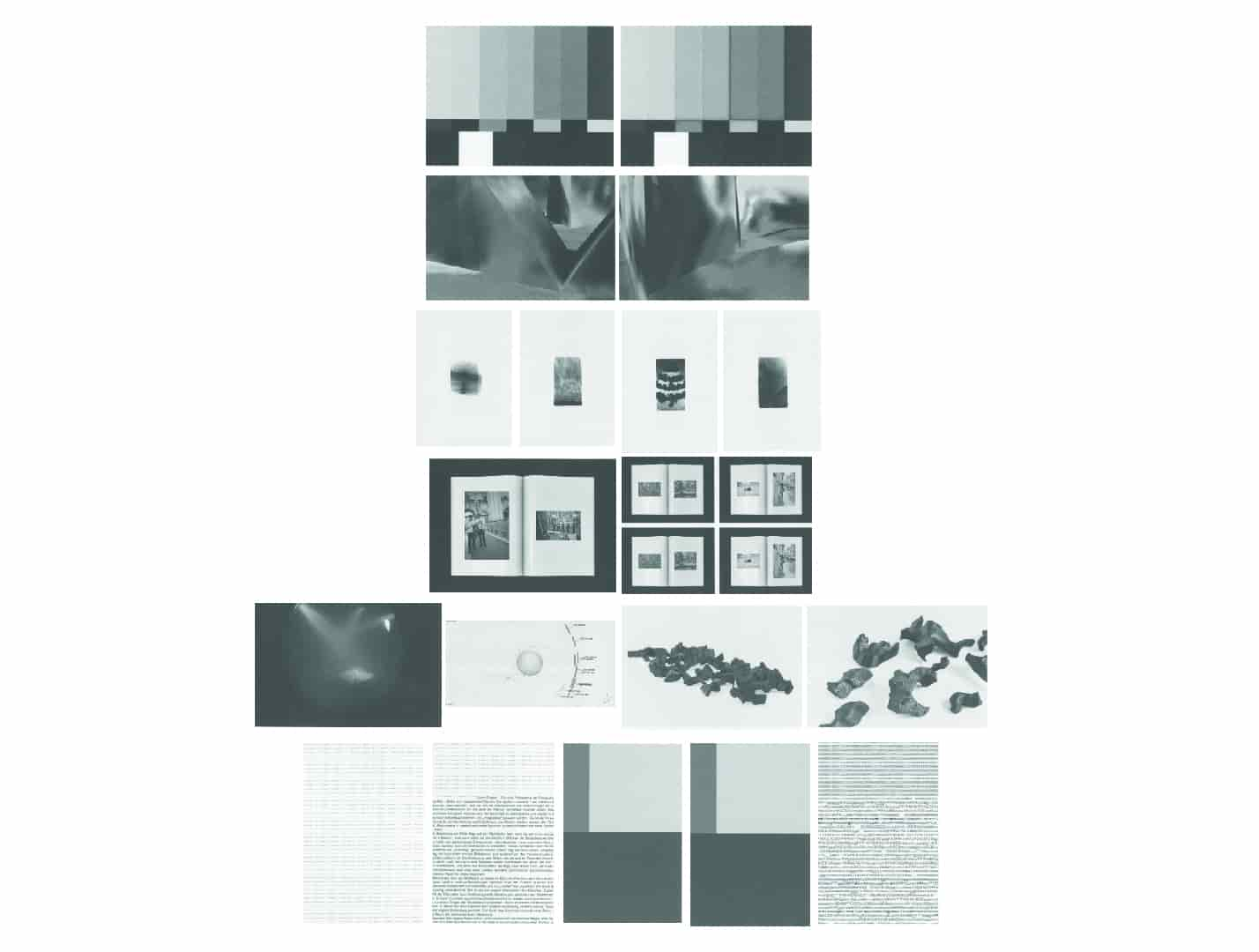
Hoffman's Exploration illustrated through series of photographic outcomes
Reflecting on Hoffman's Approach
Rather than a theoretical approach, Hoffman regarded his approach as practical basic research, where he presented his experiments in the form of five photo-based image series and a computer-generated object. This series of experiments responds to his questions revolving around the production of digital images, what form of information is transferred, and what is visible to us through this new form of images. He investigates the process from which digital images are created, the traces of the production, and the distribution itself are presented in each of the six work series that he did.
Hoffman aims to investigate the constructive potential of current digital technologies to create new forms of technical photographic images. Here, he works with manipulation on processes and techniques of digital image and photographic processors, to reveal the non-visible and what seems to escape the perception of users. His context is to reflect on the currently changing medium of photography, questioning what images mean at this point and what kind of reality we can see beneath the surface as new technology will inevitably be based on digital images.
I found his approach to making in creating the works from manipulating these processes quite inspiring. Experimenting on materials and techniques to reveal the underlying structures of a particular medium could show not only interesting unexpected results but also understand its limitations and working on that limitation to produce different forms of photographic images is what I found interesting.
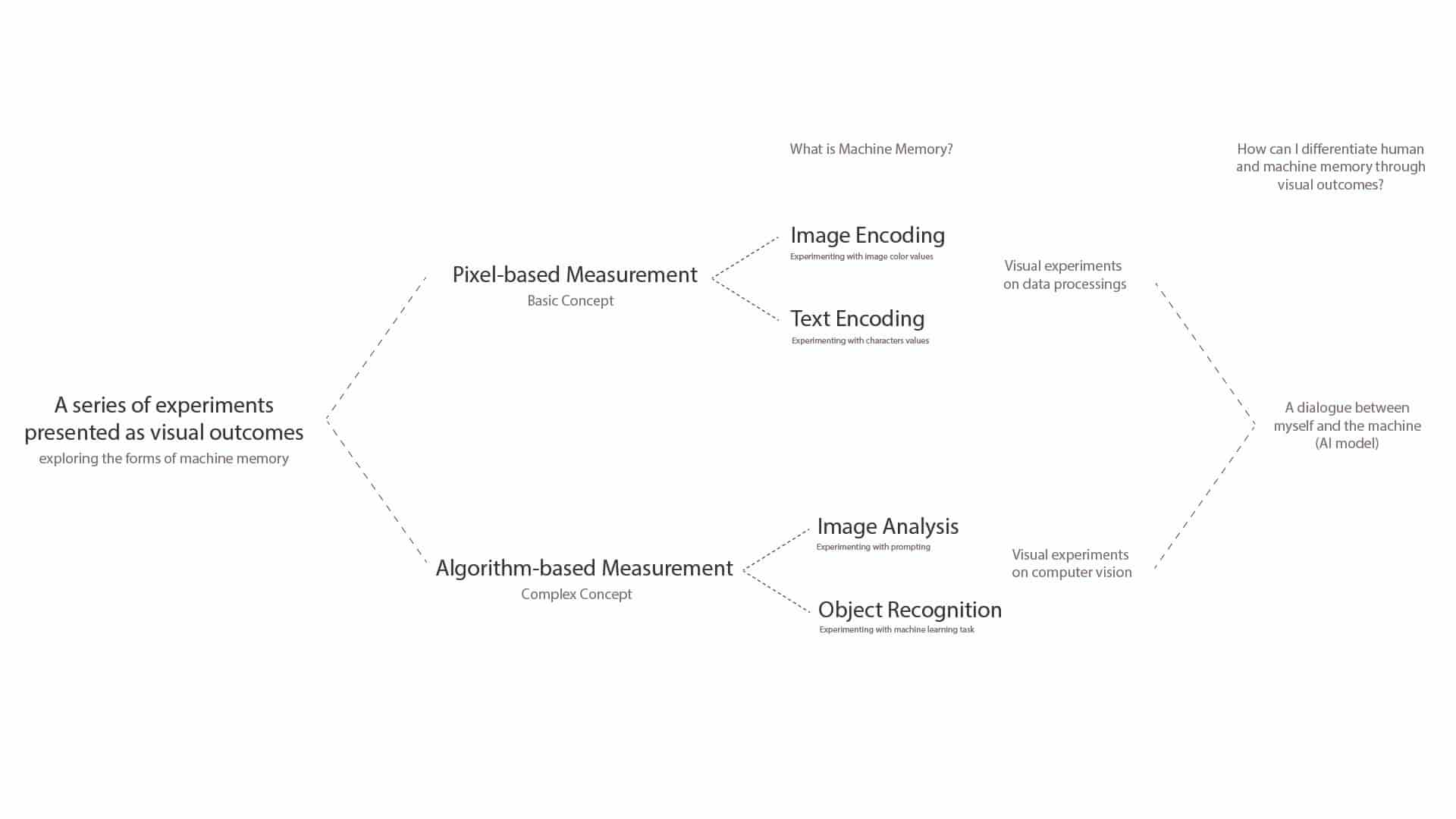
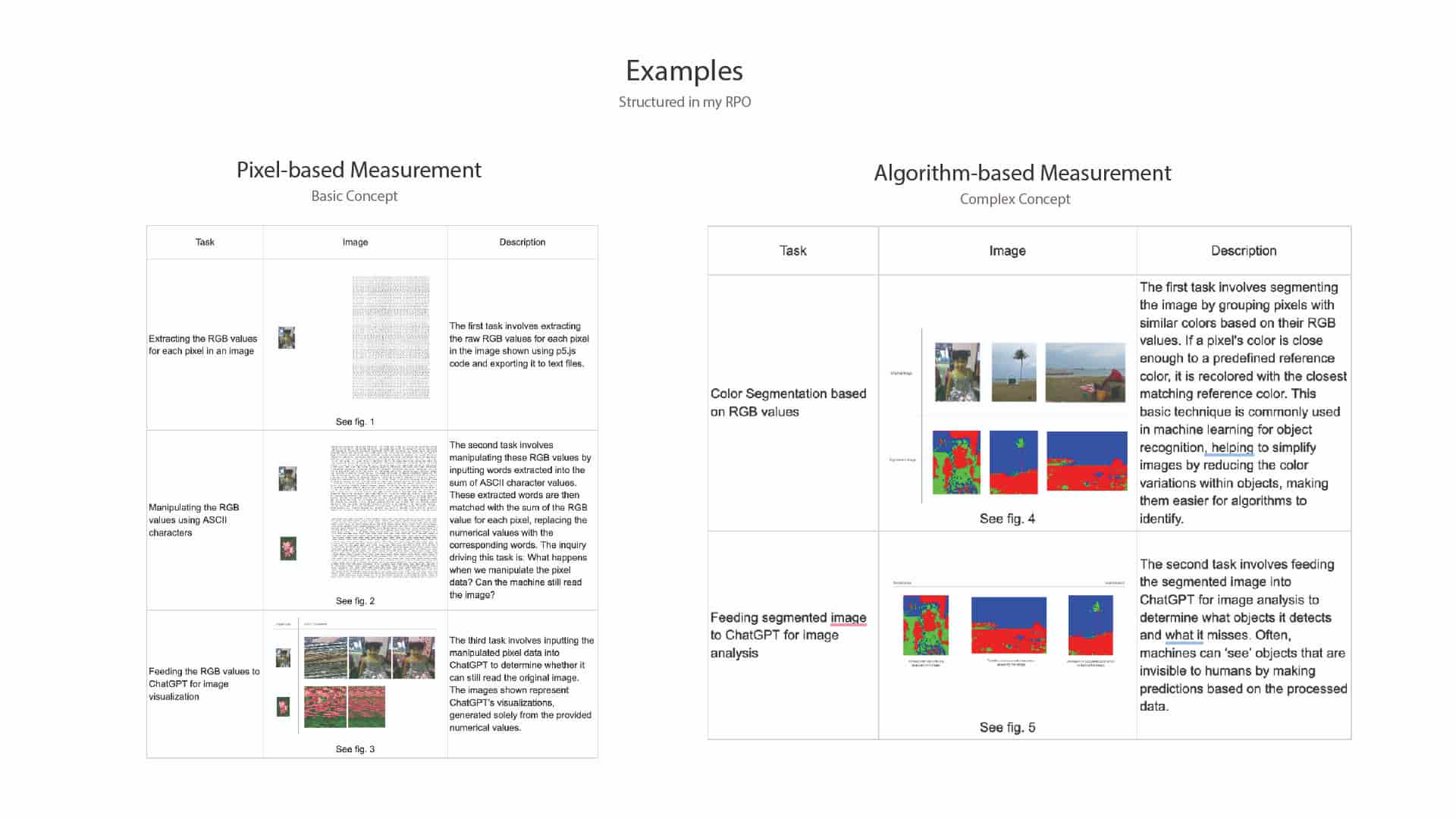
Visual Diagram of my structured experiments
Refining My Approach
For my research approach and methods, I decided to divide the so what called system into 2 parts, basing on practice based research: exploring machine memory based on pixel-based measurement and algorithm-based measurement. This approach, I would say is more exploratory, more like an investigation, referencing Hoffman's unconventional ways to explore and create new forms of images.
From the series of experiments, I want to show the boundaries between human and AI, by looking at memory as a way to differentiate both human and machine characteristics. As these intelligent machines develop, it is a good stance to keep on reflecting between whats real and whats not as everything can be done and created so easily with these machines nowadays. I believe that memory could be the boundaries that later on define what makes us different than these adaptive machines.
To prove my stance point, I will be presenting these differences between human and machine memory by first looking at what machine memory is, and using my own input (for example, my own image) as a way to understand how digital memory is stored or represented to machines. For example, in the first task, I experimented with the pixel values of an image I chose from my childhood gallery. I realized no matter what images I input or think of that these images are the only images I have of me as a kid, its nothing but numbers for the machines.
Understanding what machine memory is first through basic concepts will then led me to more complex concept that are used my machine learning systems, how these intelligent tools are trained and how they are capable of generating responses based on what theyre trained, will led me to investigate what is then AI memory. From these series of designed experiments are then shows the visual outcomes of what I think machine memory is and how it differs from human memory.
References
—-Hoffman, Max Pietro. "Means of Digital Images." NERD – New Experimental Research in Design: Positions and Perspectives, edited by Michael Erlhoff and Wolfgang Jonas, Birkhäuser, 2018, pp. 38–54.